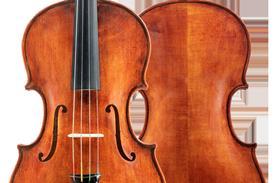- More from navigation items
- Home
- News
- For Subscribers
- Student Hub
- Playing Hub
- Podcast
- Lutherie
- Magazine
- Magazine archive
- Whether you're a player, maker, teacher or enthusiast, you'll find ideas and inspiration from leading artists, teachers and luthiers in our archive which features every issue published since January 2010 - available exclusively to subscribers. View the archive.
- Jobs
- Shop
- Directory
- Contact us
- Subscribe
- Competitions
- Reviews
- Debate
- Artists
- Accessories
Copying the ‘Titian’: A study in scarlet

Jesús Alejandro Torres reports on a study by the Violin Making School of Mexico, in which three copies of Stradivari’s ‘Titian’ violin were made using wood of varying densities
Discover more lutherie articles here
Read more premium content for subscribers here
Click here to purchase a poster of the Antonio Stradivari ‘Titian’ violin 1715
How many violinists have dreamt of captivating a concert-hall audience with the sound of their Old Italian instrument? Unfortunately, the reality is that there are not enough of these violins for everyone – not to mention their exorbitant prices – but every day we develop more scientific tools that can help us construct new violins with similar performance attributes. As luthiers, we know there is no such thing as ‘the perfect violin’, but when a musician tells us, ‘I want a violin that sounds like this particular instrument,’ of course we can aspire to fulfil that kind of request. This article looks at three violins that have been crafted with this in mind.
For the past few years, the team at the Violin Making School of Mexico’s acoustics laboratory have been performing in-depth studies on how the violin works, focusing especially on the development of scientific tools for luthiers. We capture the violin measurements, process them and make visualisations using our own software, which we have made available for anyone to download for free. We also research the wood’s material properties, and are publishing new experimental techniques for exploring the violin’s behaviour. We hope this will all serve as an aid to luthiers in the violin making process; in any instrument there are countless factors to consider, so any help should be very welcome. Think how difficult it would be to claim: ‘If I do this to the wooden blank, then the finished violin will sound more like this than like that.’ It would be a bit like seeing a cluster of grapes and predicting the exact taste that a wine made using them will have…
Already subscribed? Please sign in
Subscribe to continue reading…
We’re delighted that you are enjoying our website. For a limited period, you can try an online subscription to The Strad completely free of charge.
* Issues and supplements are available as both print and digital editions. Online subscribers will only receive access to the digital versions.




























